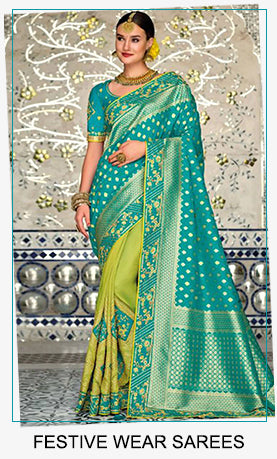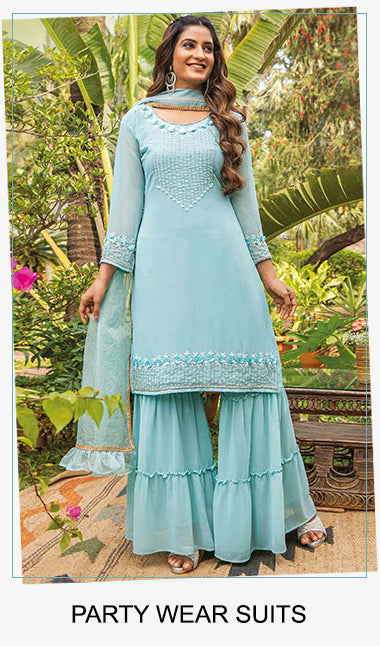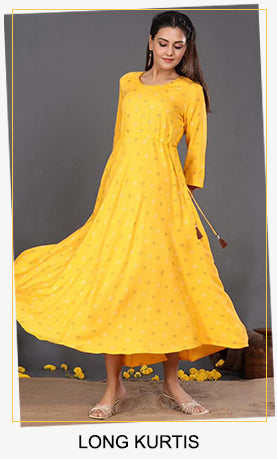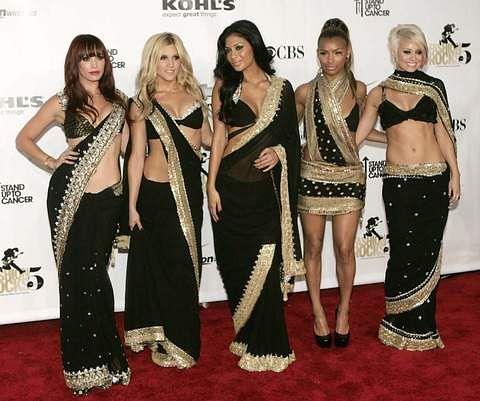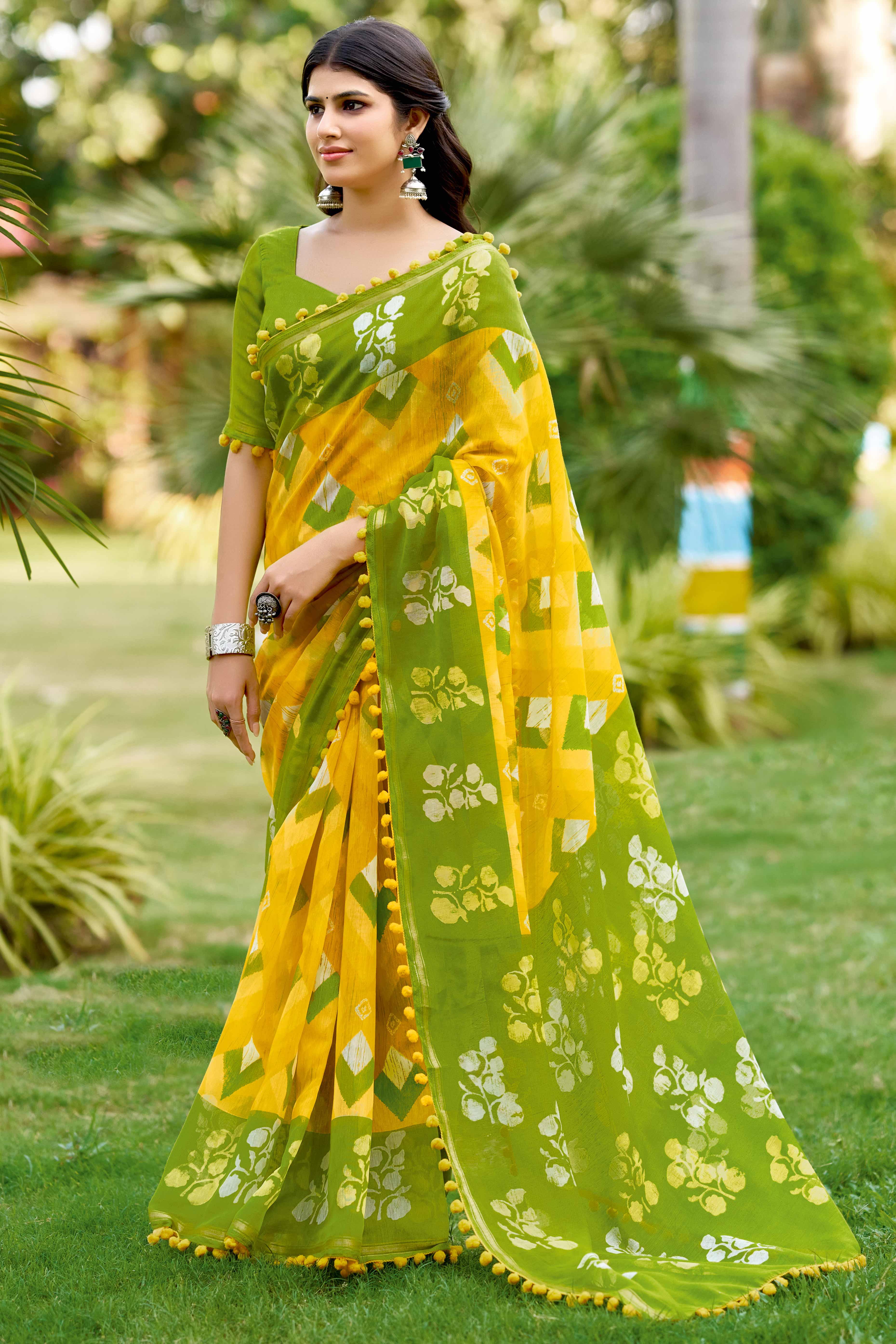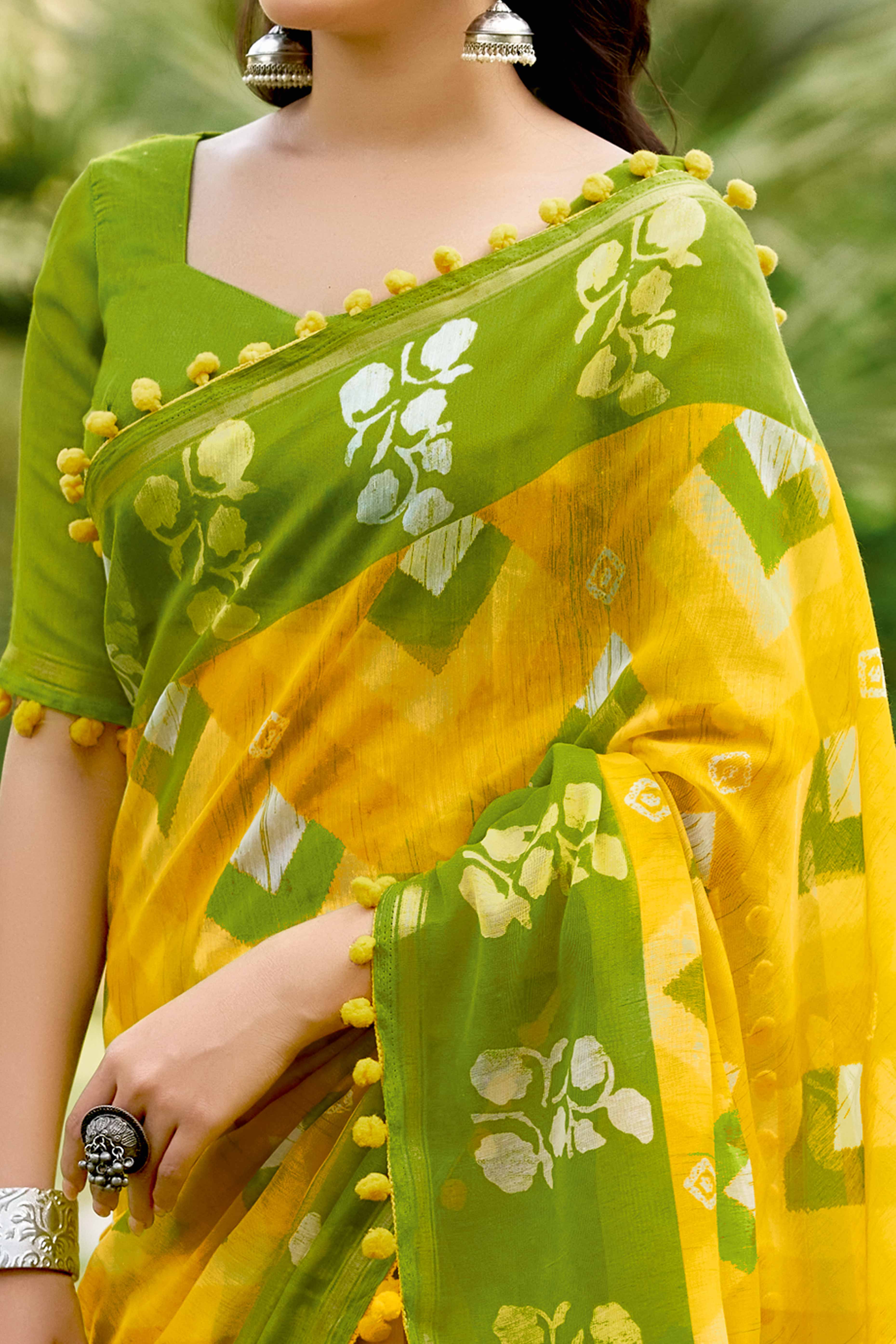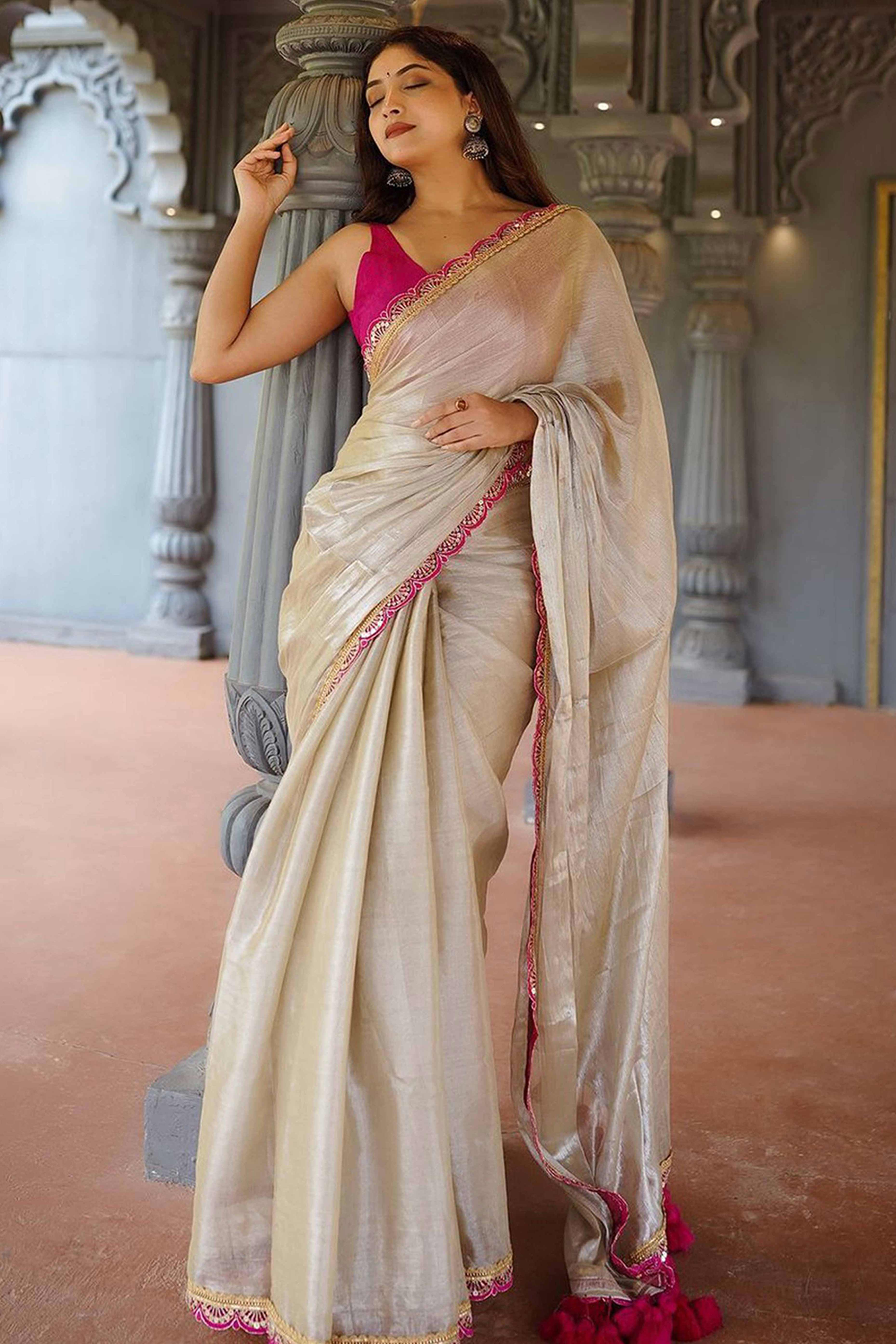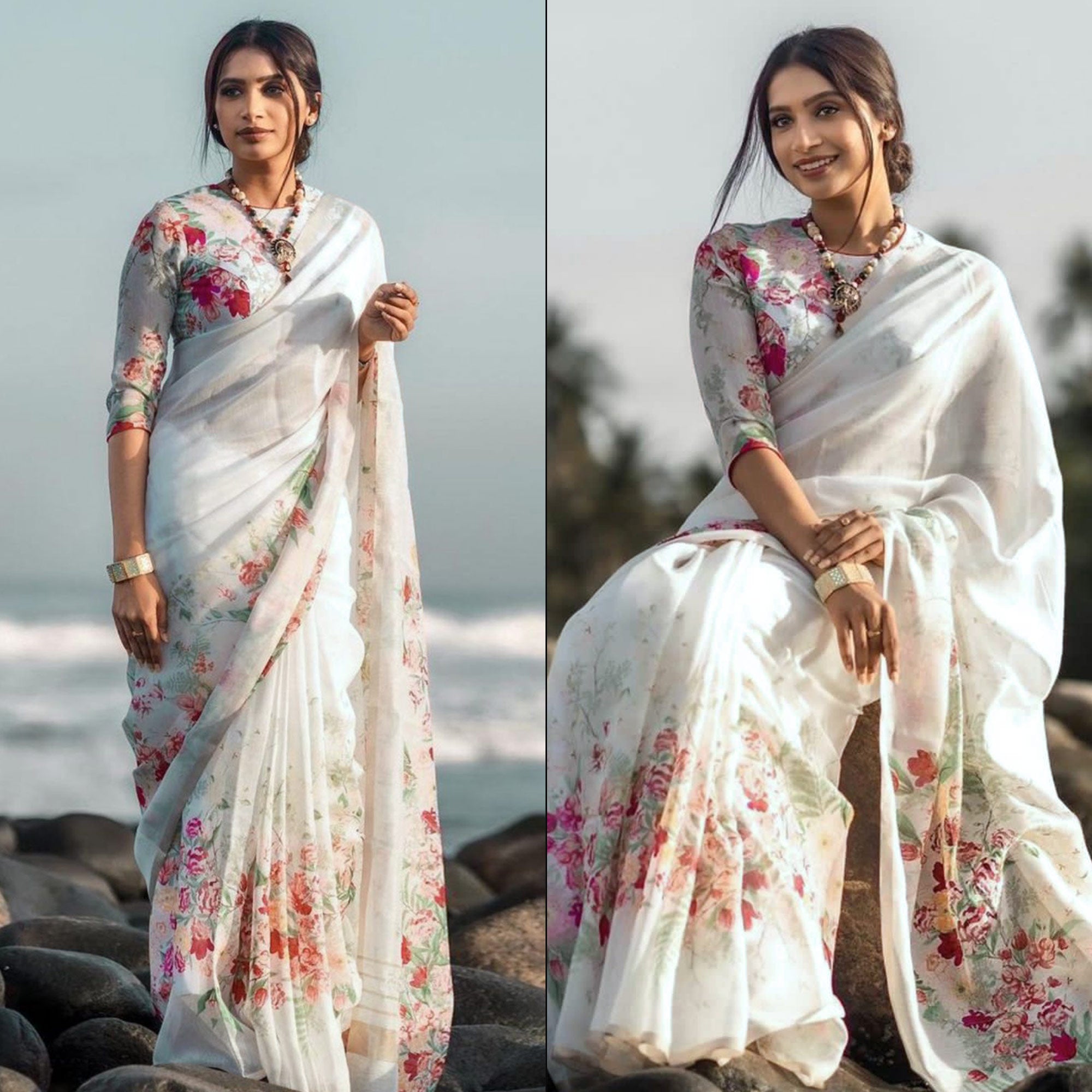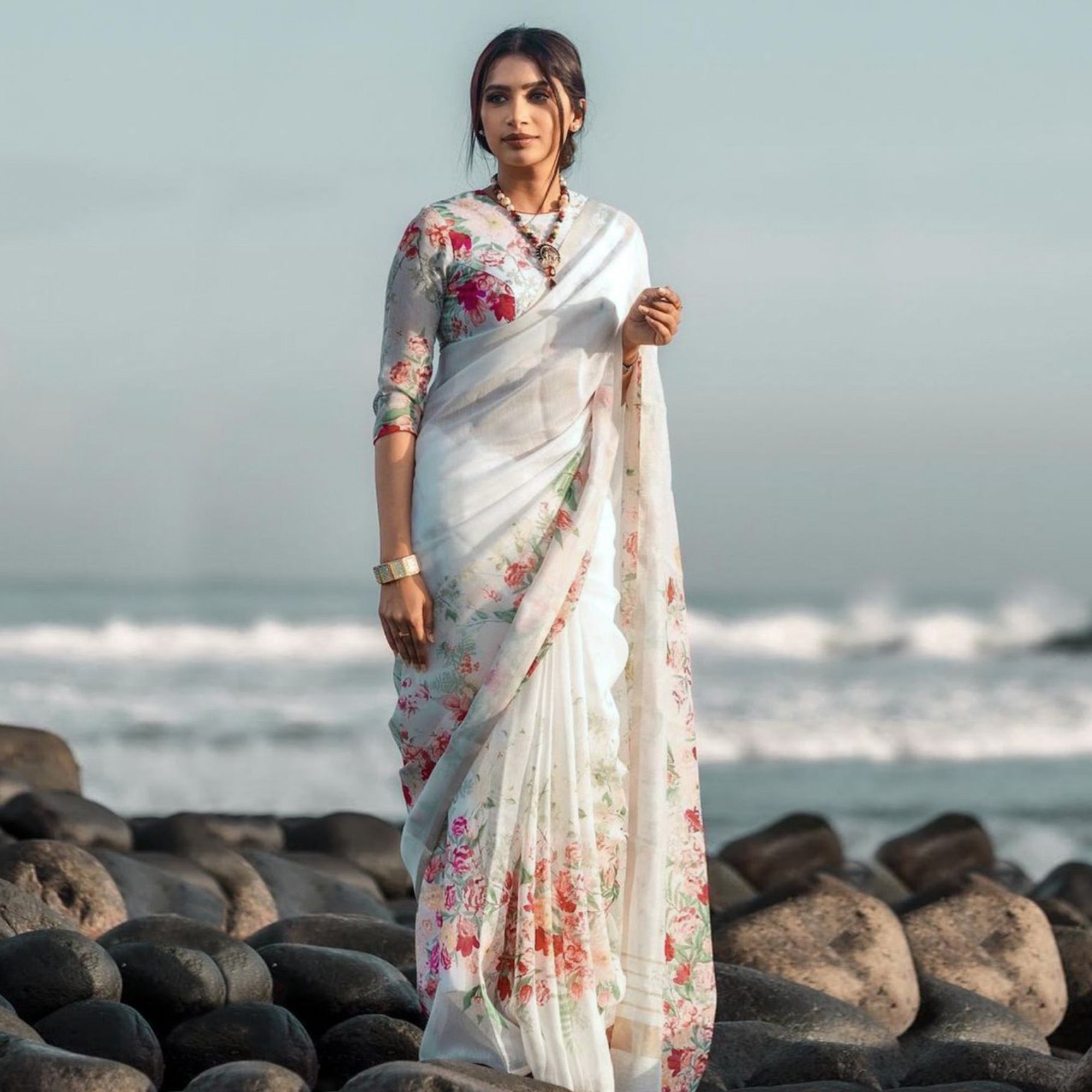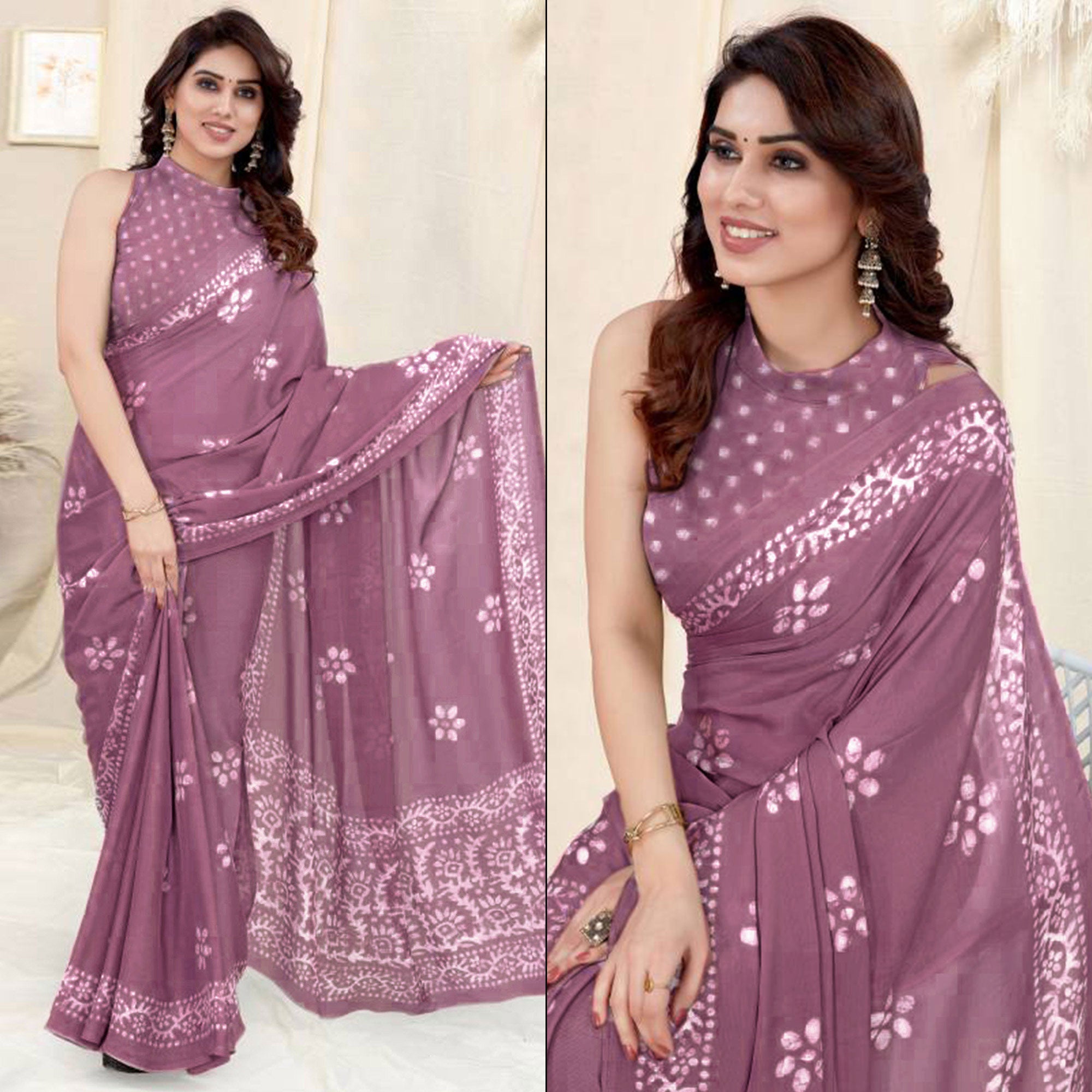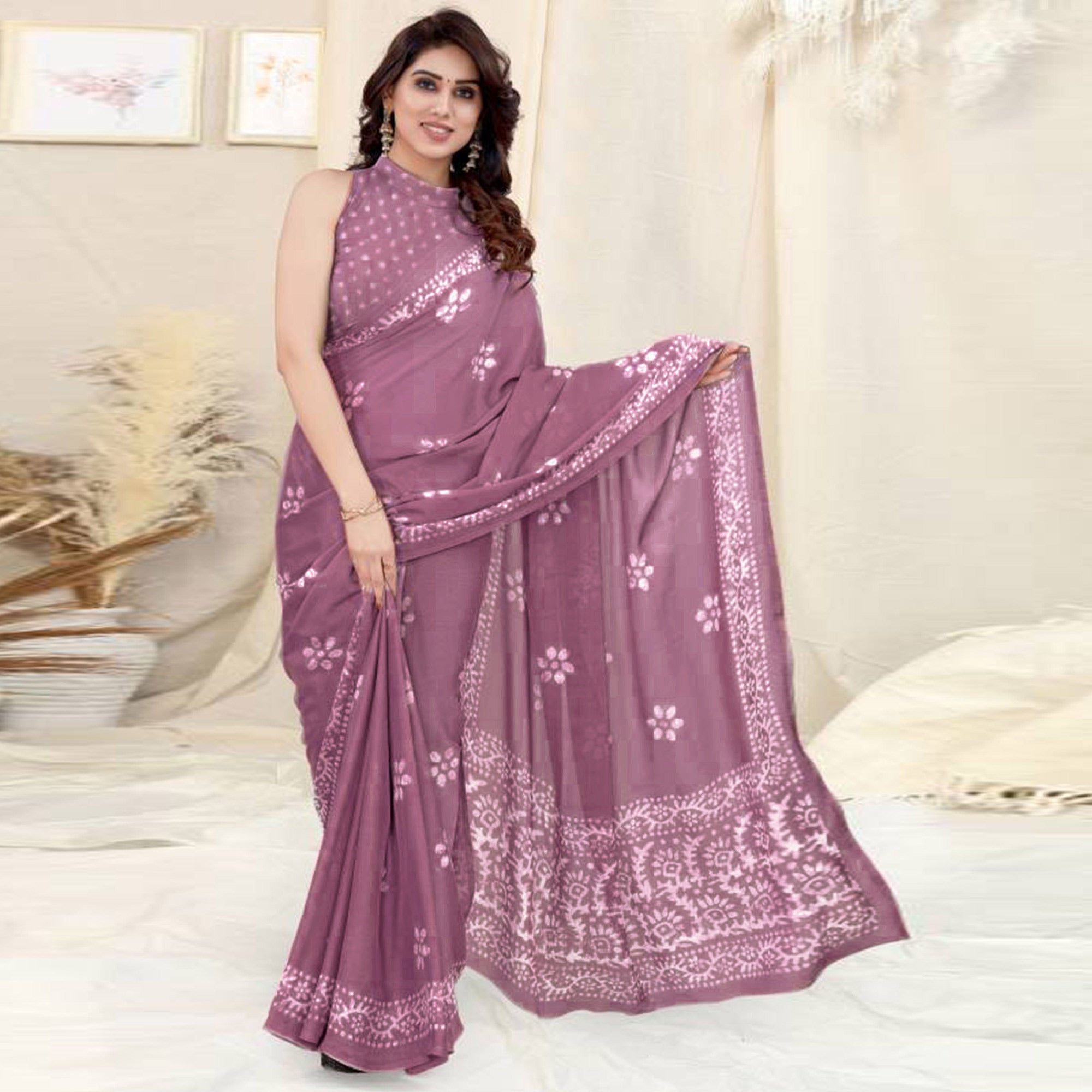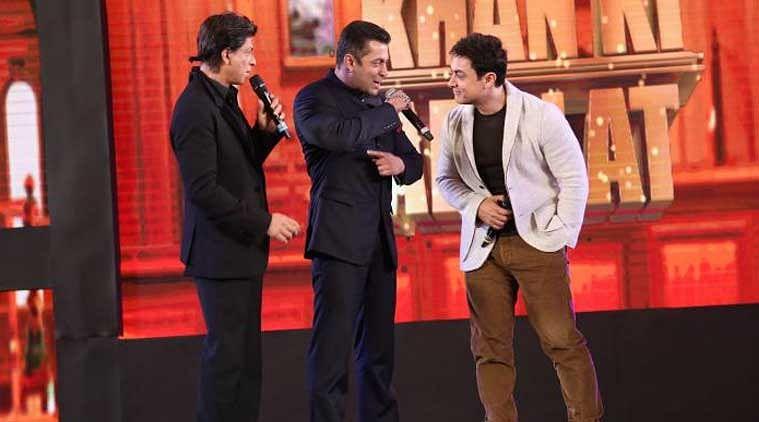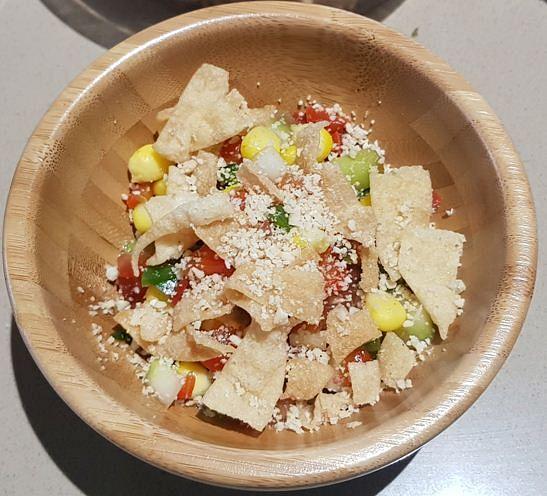Draping a Saree the Stylish Way – 7 Different Forms
Every community in India has its own style of draping the saree, e.g. Bengalis and Coorgis wear it without pleats, Tamilians and Maharashtrians wear it like a dhoti. Many traditional forms of wearing a saree have become trendy again, while the modern fashion industry has` created its own versions of classic drapes.
If you’re looking for trendy and eye-catching ways to drape your saree, these 7 essential styles are a great start:
#1 - The Basic Drape

Image Courtesy: Wikimedia Commons
The Nivi style of draping is the most common and basic drape, which works well with any kind of saree. It features a pleated front, over which the pallu is wrapped around the waist and thrown over the left shoulder. The formal variant is worn with broad pleats on the pallu, which are pinned in place.

Amy Jackson wears the elegant basic drape with a gorgeous Alpa-Reena blouse
http://peachmode.com/collections/alpa-reena/products/beige-silk-blouse-with-pearl-zardoz-emb
#2 - The Open Pallu Drape
This versatile and flattering drape is popular among Bollywood stars and fashionistas everywhere! It forms an elegant and romantic effect, especially with the clinging fabrics used in modern saree designs. It’s also quite easy to manage, since it follows the basic drape but the pallu is left open over the left arm instead of being pleated and pinned.

This Rudraksha creation worn with an open pallu drape is stylish and figure-flattering
http://peachmode.com/collections/rudraksha/products/gold-and-orange-saree
#3 - The Seedha Pallu Drape

Chitrangada wears a gorgeous open-pallu drape at Lakme Fashion Week 2013
Another popular variant of the basic drape, the ‘seedha pallu’ looks beautiful and shows off an intricate saree border. In this form, decorated pallu is thrown over the right shoulder from the back instead of the front. It can be worn pleated and spread across the chest the way Gujaratis do, or left hanging straight down the right side for a contemporary look.

Aishwarya Rai wore the elegant seedha pallu with a long jacket at Cannes 2012
#4 – The Dhoti Drape

Anusha Dandekar shows off the dhoti-style Navari drape in this hot pink saree!
The dhoti-style or Navari drape is very popular in areas like Maharashtra and Goa, since it allows for easy movement. Worn without a petticoat, this style requires a 9 yard saree, which is divided between the legs like a dhoti. This traditional style has recently become very trendy, with fashion designers and stars flaunting it everywhere!


Sonam Kapoor has taken the dhoti saree drape to new heights! (Top: Black-and-white Tarun Tahiliani at a ghazal album launch; Below: Anamika Khanna designer saree at Cannes 2014)
#5 – The Ghagra Drape

Kalki's Sabyasachi ghagra saree and printed petticoat stood out at Cannes 2012
While ghagra sarees have become a huge trend, they are normally pre-stitched. If you want to achieve the same effect with a drape, use a 9 yard sari and make small pleats all around your waist. Tuck them in tightly so they don’t slip, then drape the pallu as you like. You can also try this style with an embellished or sequined petticoat under a see-through saree!
#6 – The Accessorized Drape

Add unusual accessories to your saree drape to really draw attention!
Accessorize your saree with unique petticoats, jackets and belts for a truly contemporary effect. Embellished petticoats under translucent sarees and belted drapes are popular with young women, since they draw attention to the waist and hips. Elegant long jackets are figure-flattering, and you could try leggings under a dhoti drape for extra impact.

Sonam accessorized her Anamika Khanna saree with a baroque jacket at Cannes 2013
#7 – Other Trendy Drapes
There other many other modern versions of draping a saree that have been made popular by film stars, designers and fashion models. Bollywood introduced us to the thinly-pleated and coiled pallus that leave much of the waist bare, while pre-draped sarees are becoming visible off the ramp too!

New trends in saree draping mix traditional and modern styles
With all its avatars, the saree is so quintessentially Indian and part of our lives that little girls try draping bed-sheets around themselves to mimic the look. After all, they’ve seen on their mothers, aunts, grandmothers and every other woman they admire!

